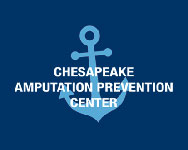Conditions That Can Be Mistaken for Nail Fungus
The following toenail conditions are often mistaken for fungal infections:
- Lines and ridges. They may worsen during pregnancy. In fingernails, a large groove down the center of the nail can be caused by nail biting.
- Senile nails. As you age, the nails become brittle and develop ridges and separation of the nail layers at the end of the nail. Try to avoid cleaning solutions, and don't soak the nails in water.
- Whitish or yellowish nails due to onycholysis. This means the separation of the nail from the nail bed. The color you see is air beneath the nail.
- Red or black nails. These are usually due to a hematoma, or blood under the nail, and occur from trauma. The discolored area will grow out with the nail and be trimmed off as you trim your nails. If you have a black spot under your nail that was not caused by trauma, you may want to see a dermatologist to make sure it is not melanoma.
- Green nails. This unusual color can be caused by Pseudomonas bacteria, which grow under a nail that has partially separated from the nail bed.
- Pitted nails. Psoriasis or other skin problems that affect the nail matrix, the area under the skin just behind the nail, can cause pitted nails.
- Swelling and redness of the skin. When the skin around the nail is irritated, it is called paronychia. This is an infection of the skin at the bottom of the nail (cuticle). If the infection is acute (has a rapid onset), it is usually caused by bacteria
- Chronic nail trauma. Athletes who are repeatedly starting and stopping, kicking, and other athletic endeavors, can cause damage to the nails that can look a lot like fungal nails.
Your podiatrist can determine if you have a fungal infection in your toenail or one of these other conditions.


.jpeg)
